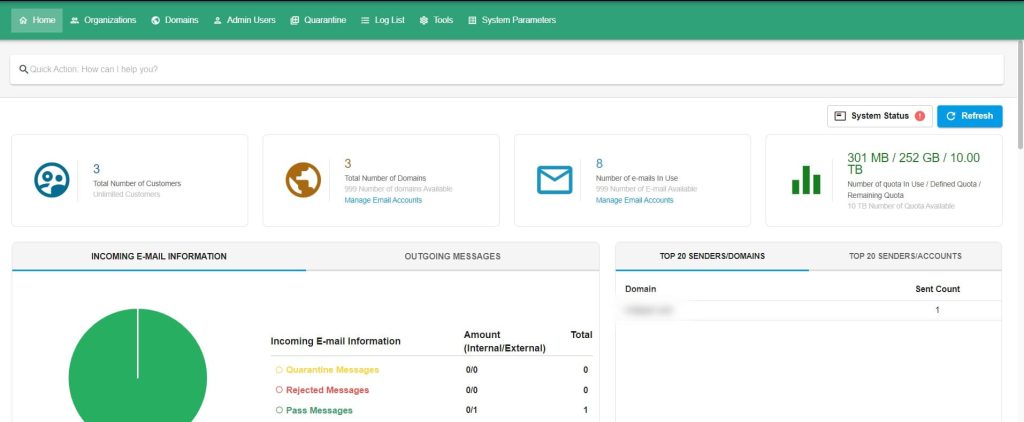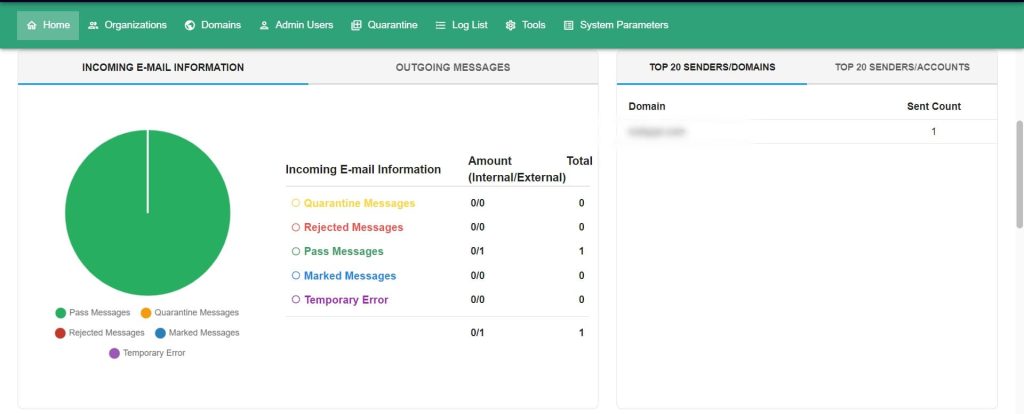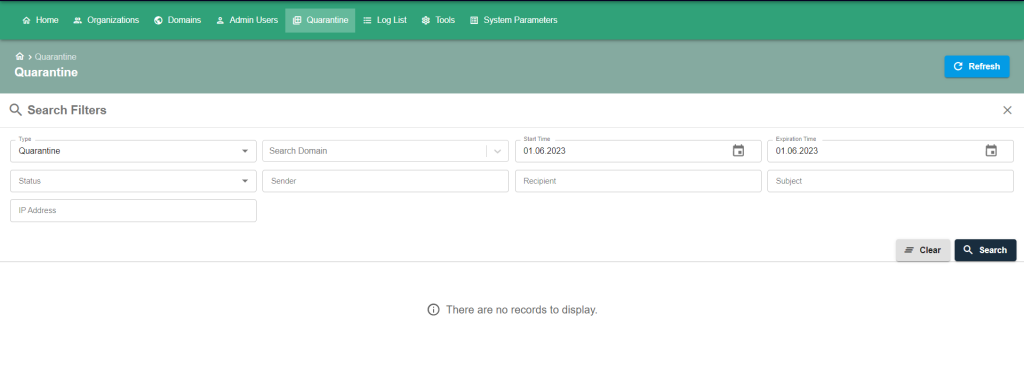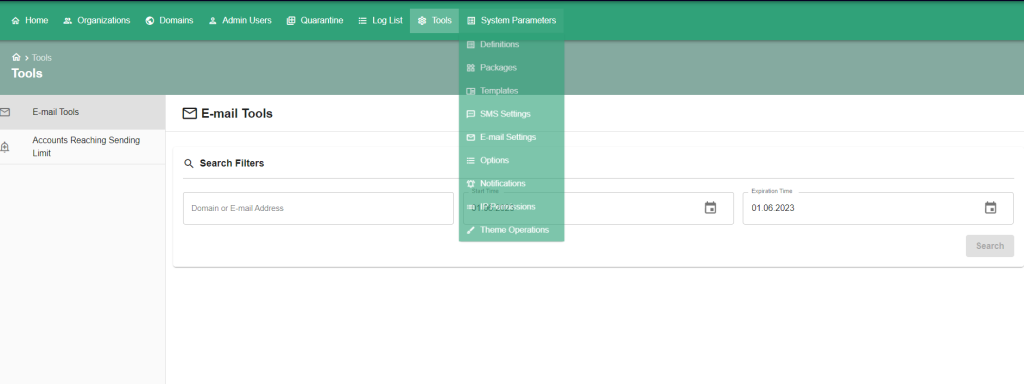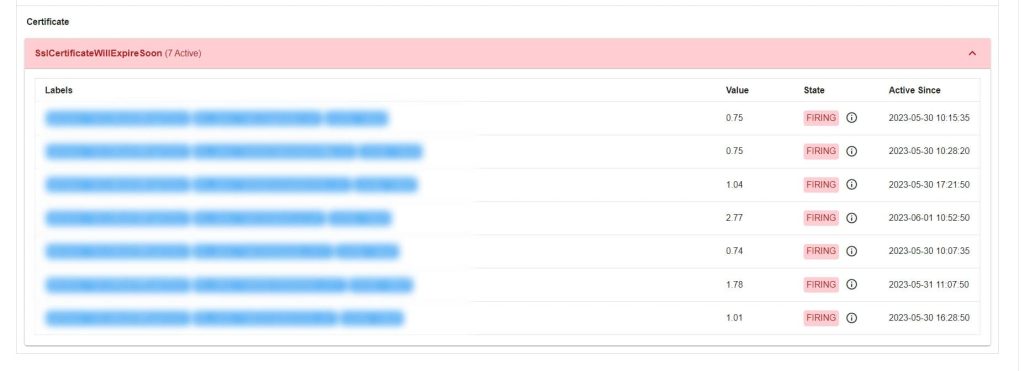Email security is critical for protecting your personal and professional information, safeguarding your privacy, and preventing cyber attacks. MX Layer experts have written this blog post to provide a comprehensive guide on email security, covering topics such as email encryption, recognizing phishing attempts, and much more. By reading this blog post, you can actively improve your knowledge of email security and learn how to keep your emails safe from cyber threats.
The Definition of Email Security
Email security refers to the practices and techniques to safeguard email accounts, content, and communication from unauthorized access, loss, or compromise. Cybercriminals frequently target email as an entry point to other accounts and devices, using tactics like malware, spam, and phishing attacks. Email encryption is one approach that can help safeguard sensitive information by concealing the content of messages and limiting access to only the intended recipients.
Organizations can improve their email security posture by developing policies and utilizing tools to reduce the risk of cyberattacks. Given the central role that email plays in organizational communication, protecting sensitive information and avoiding data breaches are crucial.
The Importance of Email Security
As technology continues to shape the modern workplace, email has become the cornerstone of business communication, with billions of emails sent and received daily worldwide. Unfortunately, this popularity has also made email a prime target for cybercriminals who use a range of sophisticated tactics, including business email compromise, malware, and phishing campaigns, to steal valuable information. With the cost of cybercrime predicted to hit a staggering $8 trillion by 2023 and $10.5 trillion by 2025, businesses can’t afford to ignore the importance of email security any longer.
The accessibility of email makes it an easy target for attacks, and bad actors can exploit a company’s sender reputation to launch mass phishing campaigns that can compromise entire organizations. These attacks often contain malware or trick recipients into sharing sensitive information, making it crucial for individuals and enterprises to take proactive measures to secure their email accounts against unauthorized access, common attacks, and other malicious attempts.
The Crucial Consequences of Neglecting Email Security

Neglecting the security of your email can have far-reaching consequences that can impact both individuals and organizations. Embark on an eye-opening journey as we delve into the consequences that await those who dare to overlook email security measures.
Loss of Prestige and Customer Trust
When an organization neglects email security, it puts its reputation at stake and undermines the trust of its valued customers. The resulting negative publicity and loss of customer trust can be extremely difficult to recover from, ultimately tarnishing the organization’s prestige and credibility in the long run. Take, for example, the case of PharMerica, a prominent US pharmaceutical giant that manages numerous facilities across the country. In March 2023, their systems were breached by an unknown actor, compromising the personal data of 5.8 million individuals.
Hackers constantly target vulnerable email systems to gain access to valuable information such as financial records, intellectual property, and personally identifiable information (PII). Once in possession of this data, cybercriminals may exploit it for various malicious purposes, including selling it on the dark web or deep web, where such sensitive information commands a high price. Recently, even well-known companies like Pizza Hut/KFC, which own popular fast-food chains, were affected by a ransomware attack that resulted in the exposure of personal data, including names, driver’s license information, and ID card details. An ongoing investigation is underway to determine if this stolen information has been used for fraudulent activities.
Legal and Regulatory Penalties
Neglecting email security exposes organizations to potential legal and regulatory penalties. Governments worldwide have established data protection regulations, such as the General Data Protection Regulation (GDPR). Non-compliance with these regulations can lead to substantial fines and legal consequences. Western Digital, a well-known technology company, recently reported a data breach where an unauthorized third party gained access to a number of their cloud systems. This incident has caused disruptions for users of Western Digital products, rendering them unable to access the cloud features of their devices.
Ransom and Extortion
Yet another distressing consequence of neglecting email security is the risk of falling victim to ransomware attacks. When organizations fail to pay the ransom within a specified time, they often face permanent data loss or the public exposure of their sensitive information. These attacks not only result in financial harm but also disrupt business operations and erode stakeholder confidence. In December 2022, the renowned UK newspaper, The Guardian, experienced a ransomware attack that highlights the severity and prevalence of such threats in today’s digital landscape.
How Secure is Email?

Emails travel through various networks and servers before reaching the recipient’s inbox, and any of these can be vulnerable to attacks. Even if a computer is secure, the email can still be intercepted and read without decryption. Additionally, cybercriminals can impersonate a sender or manipulate email content, including URLs and attachments. Email metadata contains a wealth of information about where your email came from and where it’s going.
All it takes is a few simple modifications, and suddenly an email that appears to come from a trusted source is a cunningly crafted phishing attempt. So the next time you hit that send button, remember that your email could be taking a perilous journey through the wilds of the internet, and take steps to protect yourself!
Are you truly confident in the security of your email? Let’s delve into your current practices and habits by asking a few thought-provoking questions:
- Have you chosen a secure password for your email account?
- Have you activated two-step authentication for an added layer of security?
- Do you use encryption when sending sensitive information via email?
- Do you keep your software, including your email client, up to date?
- Are you aware of phishing scams and take caution when interacting with suspicious emails?
- Have you chosen a trustworthy email service provider with robust security measures?
- Do you use a VPN (Virtual Private Network) when accessing your email on public Wi-Fi networks?
- Are you diligent about upgrading your email application regularly to benefit from security patches and enhancements?
Common Email Security Threats

Within cyberspace, nefarious actors employ many tactics to breach the sanctity of email communication, resulting in significant harm to an organization’s invaluable data assets and their hard-earned reputation. Let us explore the prominent culprits: phishing, malware, spam, spoofing, and email-based attacks.
Phishing
Phishing is a clever scheme cybercriminals employ to steal personal information and gain unauthorized access to online accounts. It sends deceptive emails, ads, links, or messages that cleverly pretend to be genuine, tricking unsuspecting recipients into revealing sensitive data. It’s alarming to note that, according to Earthweb.com, a whopping 3.4 billion phishing emails flood inboxes daily, highlighting the grave extent of this widespread cybercrime.
Malware
Malware, a contraction of malicious software, entails the utilization of malevolent code by cybercriminals to infect and compromise one or more devices. Often propagated through email messages, the overarching purpose of malware is to inflict harm or wreak havoc upon computers and computer systems. Startlingly, identitytheft.org reveals that a staggering 560,000 new malicious programs are identified daily, underscoring the alarming proliferation of this insidious threat. The pervasive reach and impact of malware are nothing short of chilling.
Spam
Spam, a pervasive email security menace, involves the transmission of unsolicited bulk emails without the explicit consent of the recipients. While legitimate businesses may employ spam for commercial purposes, unscrupulous scammers exploit this tactic to disseminate malware, deceive unsuspecting individuals into divulging sensitive information, or extort illicit monetary gains. Particularly worrisome is the inclusion of malicious links within spam emails, which intensifies their potential harm. As reported by aag-it.com, 48.63% of all emails worldwide in 2022 were classified as spam. This statistic underscores the alarming prevalence and impact of this ever-present threat to email security.
Spoofing
Spoofing stands as a sophisticated tactic wielded by cybercriminals within the realm of spam and phishing attacks. This technique revolves around the cunning manipulation of email sender information, creating a disguise that convinces recipients the message originates from a familiar or trustworthy individual or entity. The primary objective of spoofing is to beguile unsuspecting users into unwittingly engaging with malicious emails or clicking on treacherous links. By capitalizing on the foundation of trust, cybercriminals effectively amplify their likelihood of executing successful and damaging assaults.
Email-Based Attacks
Email-based attacks encompass various malicious techniques such as phishing, malware dissemination, spoofing, and other tactics strategically devised to compromise security, exfiltrate sensitive information, or gain unauthorized access. Prominent instances of email-based attacks include business email compromise, where fraudulent actors impersonate employees to pilfer funds from companies, and data exfiltration, which entails the unauthorized transfer of organizational data via email. According to a survey conducted among 1400 organizations, as reported by aag-it.com, a reputable cybersecurity firm, a staggering 80% expressed a substantial likelihood of falling victim to an email-based cyber attack. Furthermore, an overwhelming 79% of respondents reported a noticeable surge in the volume of emails received by their organizations, with 33% confirming a significant increase compared to previous years.
Email Security Measures

Email security is an indispensable aspect of upholding communication integrity and confidentiality within an organization. Robust security measures are imperative for safeguarding against diverse threats. Let’s delve into the most vital measures for ensuring email security.
Authentication
Authentication entails the verification of the sender’s identity in an email. Organizations can guarantee that only authorized senders can transmit emails on behalf of their domains by implementing authentication measures such as SPF, DKIM, and DMARC. SPF fortifies DNS servers, limiting unauthorized senders, while DKIM verifies the integrity of email content. DMARC integrates these protocols, establishing consistent policies.
Encryption
The encryption of emails plays a pivotal role in preserving the confidentiality of their content. It ensures that the information contained within emails remains inaccessible to unauthorized individuals. Encryption techniques like Transport Layer Security (TLS) encode the communication channels between email servers, effectively thwarting eavesdropping and data breaches.
Anti-virus and Anti-malware Protection
Email attachments and links can harbor viruses and malware that jeopardize an organization’s network security. The implementation of robust anti-virus and anti-malware protection aids in the detection and prevention of such threats. Regular updates and scans of e””mail attachments are vital to maintaining protection against ever-evolving malware.
Spam Filtering
Not only do spam emails squander valuable resources, but they also serve as conduits for various threats. Spam filtering techniques employ algorithms and filters to identify and block spam messages, preventing them from infiltrating users’ inboxes. Advanced spam filters leverage machine learning and artificial intelligence to adapt to new spamming techniques.
DNS Protection
Shielding the Domain Name System (DNS) is crucial to thwarting domain spoofing and other email-related attacks. DNS protection measures ensure the security of DNS servers and detect and prevent unauthorized modifications or redirects.
Phishing Protection
Phishing protection is a set of measures designed to safeguard individuals and organizations from phishing attacks. Phishing attacks typically involve deceptive emails that mimic legitimate sources, aiming to deceive recipients into interacting with malicious links or attachments. Strengthening defenses against phishing can involve collaborating with an email security partner that offers comprehensive solutions against diverse email threats. With MX Layer‘s comprehensive suite of advanced features and robust technology, you can fortify your protection against phishing attacks and ensure the highest level of security for your organization.
Secure Email Gateways (SEGs)
A Secure Email Gateway (SEG) serves as a crucial line of defense against various cyber threats, particularly phishing attacks. They help mitigate the risk posed by email-based attacks, reducing the likelihood of successful intrusions, data breaches, and financial losses. The primary function of a Secure Email Gateway is to analyze incoming and outgoing email traffic, identifying and blocking potentially harmful messages before they reach recipients’ inboxes.
Data Loss Prevention (DLP)
Data Loss Prevention (DLP) is a comprehensive set of practices, policies, and technologies implemented by organizations to safeguard sensitive data and prevent its unauthorized disclosure or leakage. The primary goal of DLP is to ensure that sensitive information remains within its intended boundaries and does not fall into the wrong hands.
DMARC, SPF, and DKIM Policies
DMARC, SPF, and DKIM are pivotal email security protocols that collaborate to enhance an organization’s overall email infrastructure security. SPF limits unauthorized senders, DKIM verifies email integrity, and DMARC integrates these protocols, offering consistent policies and improved reporting capabilities.
Here, we present a comprehensive email security checklist, equipping you with the essential measures to safeguard your communication from threats:
The Email Security Measures Checklist
| Authentication |
|
| Encryption |
|
| Anti-virus and Anti-malware Protection |
|
| Spam Filtering |
|
| DNS Protection |
|
| Phishing Protection |
|
| Secure Email Gateways (SEGs) |
|
| Data Loss Prevention (DLP) |
|
| DMARC, SPF, and DKIM Policies |
|
In a world where email reigns as the lifeline of communication, ensuring ironclad security becomes imperative for government organizations. Enter the NCSC Email Security Check tool, a powerful ally that equips these entities with a comprehensive assessment, expert recommendations, and foolproof guidance to fortify their email setups. Harness this essential tool at https://emailsecuritycheck.service.ncsc.gov.uk/ and safeguard your government email infrastructure.
Best Practices for Email Security
Enterprises have developed effective strategies to strengthen email security and protect communication in response to the ever-changing landscape of email threats.
Employee Education and Training
Regular training sessions should be conducted to educate employees on email security, reducing the risk of human error. Training employees to recognize phishing attacks and other signs of malicious intent is crucial.
Advanced Threat Protection
It is essential to upgrade to an email security solution that offers advanced threat protection. Standard security measures, such as blocking known malicious file attachments, are no longer sufficient against sophisticated attacks. Deploying a multi-layered secure email gateway can help detect and prevent threats from entering or leaving the organization. MX Layer’s solutions include advanced threat detection mechanisms that go beyond traditional methods.
Email Encryption
Automated email encryption solutions should be deployed to analyze outgoing emails for sensitive information. If sensitive content is detected, it should be encrypted before being sent to the intended recipient to prevent unauthorized access. MX Layer offers automated email encryption solutions that analyze outgoing emails for sensitive information.
Account Protection
Implementing multi-factor authentication (MFA) adds an extra layer of security by requiring users to provide multiple authentication factors to access their accounts. MFA helps prevent account compromise and safeguards organizational data. MX Layer’s solution may include multi-factor authentication (MFA) capabilities, which add an extra layer of security.
Protection against Business Email Compromise (BEC)
Review existing protections against BEC attacks, including methods like spoofing and impersonation. Implement measures to minimize the risk of fraudulent email communications and unauthorized access to sensitive data. MX Layer’s solution includes measures to mitigate BEC attacks, such as spoofing and impersonation.
Real-time Email Traffic Protection
Develop a comprehensive email protection plan to defend against threats like ransomware and data breaches. The MX Layer provides a comprehensive email protection plan to defend against ransomware and data breaches.
Email Backup
Email backup is the practice of making a secure copy of your email messages to protect against unexpected loss. By backing up your emails, you add an extra layer of security, ensuring that essential communications are never lost and can be easily restored whenever needed. MX Layer’s comprehensive solutions include Email Backup so you can stay worry-free knowing your valuable emails are protected.
Email Archiving
Email archiving involves preserving email communications in a digital format that allows for easy storage, indexing, search, and retrieval. Organizations implement email archiving solutions for various purposes, including ensuring business continuity and disaster recovery, facilitating internal audits and investigations, enabling e-discovery for litigation, maintaining regulatory compliance, managing records, and safeguarding intellectual property through documentation and protection. Experience the power of MX Layer Email Archiving, a comprehensive solution that securely preserves your email communications.
Why the MX Layer Email Security Platform is the Ultimate Email Security Solution

Industries
MX Layer provides comprehensive and affordable cybersecurity services to various businesses. Our clients include MSPs, MSSPs, Hosters, ISPs, small and medium-sized enterprises, and large enterprises. MX Layer stands out by offering competitive prices without compromising on quality. We also provide a free trial version for 30 days, allowing businesses to experience their top-notch protection firsthand. With MX Layer, businesses can thrive in the digital landscape, knowing a trusted and cost-effective security solution safeguards their data and systems.
Solutions
With its arsenal of cutting-edge features, MX Layer offers best-in-class defense against phishing, impersonation, and many other threats, making it the ultimate email security solution for businesses of all sizes.
Shield your team’s and clients’ sensitive data with MX Layer’s Email Security and Protection service. Its advanced AI algorithms provide an impenetrable defense against sophisticated email attacks, ensuring your inbox remains a secure fortress.
Say goodbye to spam, viruses, and phishing attacks with MX Layer’s Inbound Email Filtering. This powerful feature acts as an intelligent gatekeeper, allowing only legitimate emails to reach your inbox, keeping your communication focused and efficient.
Maintaining your company’s reputation is crucial. MX Layer’s Outbound Email Filtering service scans every outgoing email, guaranteeing it meets security standards and doesn’t contain malicious content.
MX Layer’s commitment to data retention and compliance is evident with features like Email Archiving, Email Compliance, and Data Leak Prevention (DLP). Securely store and retrieve correspondence, meet industry-specific regulations, and prevent unauthorized data leaks.
Platform Features
MX Layer’s Outbound Gateway Protection provides a comprehensive solution to combat outbound spam and IP blocking while significantly improving email delivery and continuity. Inbound Gateway Protection, powered by MX Layer, ensures a robust defense against inbound threats, including spam, malware, and phishing attacks. It guarantees the secure and uninterrupted flow of emails into your organization while maintaining high levels of email security.
MX Layer incorporates advanced antivirus and antispam protection features to tackle the ever-evolving threats of viruses and spam. Leveraging multiple third-party vendor-acquired signatures, these features offer global visibility into the latest threats, ensuring robust security.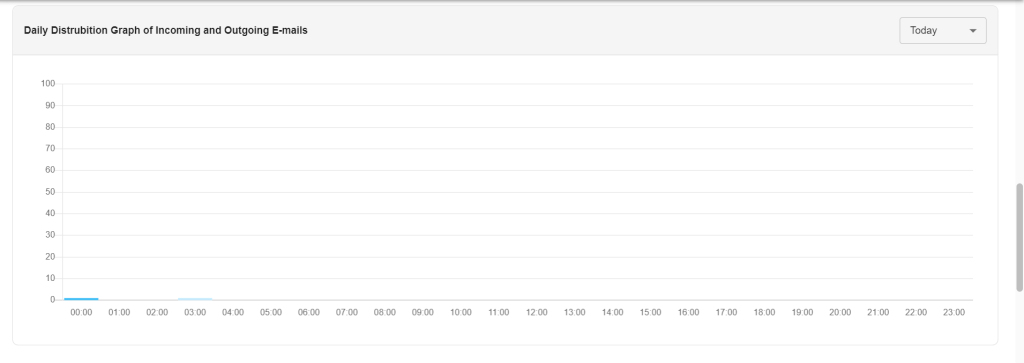
One of MX Layer’s standout capabilities is its content scanning feature, empowering you to create customized filters for both inbound and outbound emails. This advanced content filtering capability grants you unmatched control and protection against spam, phishing attempts, and malware, allowing you to act against any email that matches a filter immediately.
MX Layer also takes email attachment security to the next level with its attachment filtering feature. By meticulously identifying and filtering specific file types based on extensions and MIME types, MX Layer shields your organization from email-borne threats and potential data breaches, providing peace of mind and ensuring data integrity.
Data leak prevention is another critical aspect of MX Layer’s comprehensive security solution. With its robust protection mechanisms, MX Layer identifies and prevents the leakage of sensitive information, effectively safeguarding against data breaches and preserving your organization’s reputation.
Furthermore, MX Layer offers an additional layer of security through URL scanning. By meticulously inspecting and scanning all URLs in emails, this feature detects and neutralizes any links leading to malicious websites, bolstering your company’s defense against cyberattacks and protecting your valuable assets.
One of the most impressive features of MX Layer is its Zero-Hour Attack Protection. Engineered to detect and safeguard against new and unknown threats that have yet to be identified, this advanced security feature ensures that your organization remains protected even from the most sophisticated attacks.
MX Layer’s All-in-One, AI-Powered Efficacy sets it apart from the competition. By combining cutting-edge technology, constantly updated threat intelligence, and state-of-the-art AI and machine learning, MX Layer delivers unparalleled detection capabilities, offering the highest level of security for your email infrastructure.
MX Layer’s superiority extends to its 100% Independent Cloud Infrastructure. With this advanced protection against sophisticated email attacks, you can ensure email continuity and prevent data loss without additional hardware or software, streamlining your security operations.
Moreover, MX Layer seamlessly integrates with any email server your company uses, ensuring compatibility and ease of implementation. This integration further simplifies your security setup and enhances the overall effectiveness of your email protection.
Are you ready to elevate your email security to new heights? Take the first step towards a fortified defense with MX Layer. Start your free trial today and experience the peace of mind that comes with comprehensive email protection.



